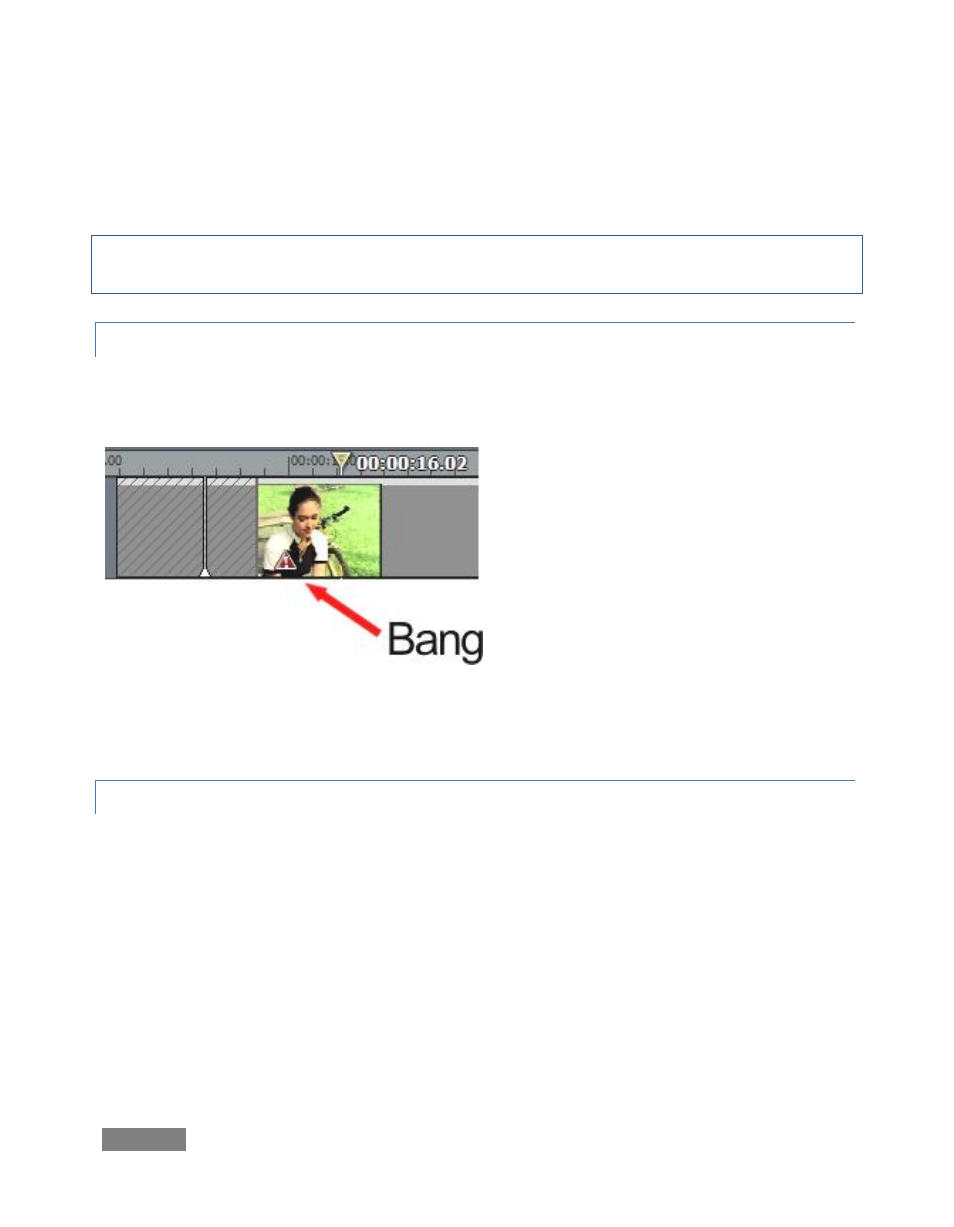Trimming clips, Timeline snapping – NewTek TriCaster Studio User Manual
Page 148

Page | 128
To quickly zoom out to see the entire project, double-click in an empty area of the Timeline
pane. To zoom in on selected clips only, double-click the Time Bar, or hold down the Ctrl key,
and double-click in the Timeline background.
Note: Click the magnifying glass at the bottom of the vertical scroll bar on the right to change the
height of the Timeline tracks. Drag up to enlarge the tracks, and down to shrink them.
8.4.5 TRIMMING CLIPS
There are several ways to trim clips in the Timeline: You can place the cursor over the edge of a
clip so it changes to display ‘IN’ or ‘OUT’ and then drag that edge to the frame desired.
It is possible to drag the clip edge beyond the
first or last frame, and you will see hash-
marks and a ‘bang’ (an exclamation point on
a red triangle) to remind you that you have
exceeded the actual first or last frame. This
will hold that frame for as long as you wish.
You can also set the edit line at the frame you want, and press the i key to make that spot the in
point or o for it to become the outpoint, and the clip will snap to its new position. Shift + i or o
not only sets the in or out point, but also jump back 5 seconds and play the edit.
8.4.6 TIMELINE SNAPPING
To move a clip, simply click it and hold, then drag it. Clips in the Timeline have a ‘magnetic
attraction’ to other items, and tend to ‘snap’ to them. For example, when the bottom or top of a
clip approaches a track line, the clip snaps to that spot. The clip also snaps to vertical lines in the
panel. Most importantly, a clip will snap to the Edit Line, and the In or Out Point of other clips.
This tendency to snap does not prevent you from moving the clip wherever you want on the
Timeline (however, clips will insist on sitting on a track line.) You can move multiple clips in the
Timeline by selecting them, and then dragging them all at once. When you drag multiple items,
only the first item selected snaps. Other items maintain their relative positions to the first item.
Figure 139